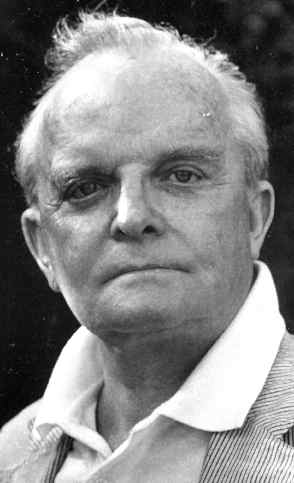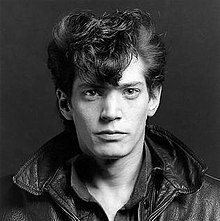 Edmund White’s latest book, Sacred Monsters, is a collection of short profiles of artistic figures. In many ways Sacred Monsters is reminiscent of Lytton Strachey’s Eminent Victorians, but unlike Mr. Strachey, Mr. White has no hidden or unhidden agendas here. These profiles are on the whole appreciative. And they are also objective. So while Mr. White can sometimes be brutally honest, his humanity always seeps through. It also helps that he knew several of his subjects personally.
Edmund White’s latest book, Sacred Monsters, is a collection of short profiles of artistic figures. In many ways Sacred Monsters is reminiscent of Lytton Strachey’s Eminent Victorians, but unlike Mr. Strachey, Mr. White has no hidden or unhidden agendas here. These profiles are on the whole appreciative. And they are also objective. So while Mr. White can sometimes be brutally honest, his humanity always seeps through. It also helps that he knew several of his subjects personally.
As defined by Mr. White, a sacred monster–the English translation of the French expression, monstre sacre–is “a venerable or popular celebrity so well known that he or she is above criticism, a legend who despite eccentricities or faults cannot be measured by normal standards.” That covers a lot of ground. And Mr. White does not pretend to put all of the sacred monsters into this book, but his selections for this volume are interesting in themselves. Fifteen of them are queer. The rest are just fabulous. Like Edith Wharton who “toward the end of her life had twenty-two servants in two houses,” and “wrote the first draft of her most American novel Ethan Frome, in French as an exercise.” Mr. White always has just the right fun facts, but these essays are also surprisingly passionate, because Mr. White always has a deep personal connection to his subjects–even when he is writing about historical figures.
The arrangement of these essays isn’t obviously logical. The reader is asked to leap from Edith Wharton to John Cheever; from Ford Madox Ford to Truman Capote. And so you will be tempted to skip around. I must advise against this. Because the connections between these profiles are visceral. And if you do skip around, you might miss a surprising pleasure,”The Loves of the Falcon,” Mr. White’s profile of Glenway Wescott–an author who Mr. White was personally acquainted with. That said, I must say that Mr. White’s profile of Truman Capote, “Sweating Windows,” is my personal favorite. In fact, if you read no other essay in this book, you will have gotten your money’s worth with this one alone.
 In “Sweating Mirrors,” Mr. White describes a summertime visit to Truman Capote’s apartment. It’s ninety-nine degrees outside and Mr. White is looking forward to some serious air conditioning. But Mr. Capote informs him that the air conditioning is broken and leads him into his hot, steamy apartment. It seems weird that the air conditioning could be broken in the ultra-modern United Nations Plaza building. And it gets weirder. Mr. Capote’s Music for Chameleons has just been published and Mr. White congratulates him on it. The interview that follows is punctuated by Mr. Capote’s quick trips to another room from which he emerges relaxed, reinvigorated and finally: unchanged. Along the way Robert Mapplethorpe and Marcus Leatherdale arrive to photograph him and he is seemingly unaffected by this sexy duo. And the interview continues. Music for Chameleons is dedicated to Tennessee Williams. Was this amends for the unflattering portrait in the Answered Prayers Esquire Magazine chapters?
In “Sweating Mirrors,” Mr. White describes a summertime visit to Truman Capote’s apartment. It’s ninety-nine degrees outside and Mr. White is looking forward to some serious air conditioning. But Mr. Capote informs him that the air conditioning is broken and leads him into his hot, steamy apartment. It seems weird that the air conditioning could be broken in the ultra-modern United Nations Plaza building. And it gets weirder. Mr. Capote’s Music for Chameleons has just been published and Mr. White congratulates him on it. The interview that follows is punctuated by Mr. Capote’s quick trips to another room from which he emerges relaxed, reinvigorated and finally: unchanged. Along the way Robert Mapplethorpe and Marcus Leatherdale arrive to photograph him and he is seemingly unaffected by this sexy duo. And the interview continues. Music for Chameleons is dedicated to Tennessee Williams. Was this amends for the unflattering portrait in the Answered Prayers Esquire Magazine chapters?
Ah, Answered Prayers. That potentially great American novel that never quite got finished. Why not? Mr. White has given this some thought:
The rich have the means to realize their whims and the effrontery to avow their desires. Sex, travel gambling and intrigue are their sports, while itineraries and adulteries provide them with conversation, just as loyalty to the clan, devotion to fashion and the display of perfect manners constitute their virtues. Above all, jet-setters love a good story. Too bad Capote didn’t stay sober long enough to betray his friends more thoroughly.
Another personal favorite of mine is “The Strange Charms of John Cheever.” In it, Mr. White argues that it was Mr. Cheever’s sobriety and his acceptance of his homosexuality that lay at the root of his claim to literary greatness. On Falconer he writes:
What was remarkable was that Cheever had the sobriety to think through a novel and sustain its unified design. No longer were his pages inspired riffs held together with paper clips and chewing gum; now he’d turned out a shapely novel. Moreover there was a calm wisdom in this Falconer his masterpiece, and in it he had quietly come to terms with his homosexuality.
 Mr. White is as comfortable writing about visual artists as he is about writers. Indeed some of his best writing can be found in his essays on Auguste Rodin and David Hockney. But in his Robert Mapplethorpe profile he really opens up. He begins by describing Mr. Mapplethorpe–who he knew personally in the late seventies and early eighties. “Mapplethorpe…imposed his personal visual style on every element of his environment, from his simple, sturdy, virile Stickley furniture to his collections of glass and pottery to his own clothes, his saturnine leathers… rather supple, form-fitting Dutch black leathers elegantly seamed in blue.” And then Mr. White takes great pains to describe the historical context of Mr. Mapplethorpe’s work:
Mr. White is as comfortable writing about visual artists as he is about writers. Indeed some of his best writing can be found in his essays on Auguste Rodin and David Hockney. But in his Robert Mapplethorpe profile he really opens up. He begins by describing Mr. Mapplethorpe–who he knew personally in the late seventies and early eighties. “Mapplethorpe…imposed his personal visual style on every element of his environment, from his simple, sturdy, virile Stickley furniture to his collections of glass and pottery to his own clothes, his saturnine leathers… rather supple, form-fitting Dutch black leathers elegantly seamed in blue.” And then Mr. White takes great pains to describe the historical context of Mr. Mapplethorpe’s work:
The exact historical and cultural moment of the late 1970’s in gay New York is hard to recreate partly because it was overshadowed after 1981 by the dark and ever growing anxiety generated by AIDS, which not only cast a pall over an earlier exuberance but also changed values so radically that one can scarcely understand that vanished era.
Mr. White spends much of this essay defending Robert Mapplethorpe’s work. Mr. Mapplethorpe’s photographs have been attacked from so many angles–left right and in between–that Mr. White’s responses to them can be dizzying. I’ve never been a huge fan of Robert Mapplethorpe’s work, but reading the various attacks on him, it occurred to me that they all have one thing in common: sex. And this is where the historical context comes in. Because while there was once a time when sexuality was celebrated in our culture, that time has passed. As Mr. White puts it: “Today…gay assimilationists play down the troubling question of sexuality altogether.” All the more reason for this queer reader to give Robert Mapplethorpe’s photographs another look.
In all there are twenty-one profiles in this book. They include E.M. Forster, Tennessee Williams, James Merrill, Vladimir Nabokov, Marcel Proust and Henry James. The Paul Bowles profile, “The Desert of Solitude,” is particularly interesting, because Mr. White contrasts the plot of The Sheltering Sky with a remarkably similar trip he took with a friend who was dying of AIDS.
Sacred Monsters is another magnificent achievement from one of America’s great authors. Queer Reader strongly recommends this book.
Edmund White’s Sacred Monsters is published by Magnus Books.
11/29/2011